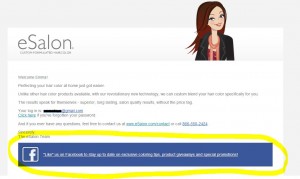Last blog looked how personalised email makes a business email marketing strategy stand out. It underlined how this strategy help get consumers’ attention. However, if not done properly it could easily end up in the delete folder. Today I want to look at steps businesses to take and employ personalisation well to their email marketing.
Step 1
Always have the consent of the consumer
One of the main reasons must emails get classified as junk or end up in the delete folder is because the consumer is not expecting any email from the particular business. In some states in the USA is illegal for a business to send unsolicited e-mails to individuals. When consumers are signing up, e-marketer can simple have a default box ticked that the individual will be contacted by email. Behavioral economics has proven that individuals are unlikely to reverses default setting due to status qua bias (Reid, 2012).
Step 2
Address the consumer by the preferred name (Please, spell it correct)
This is the nucleus of personalisation strategy. There are ways to help get consumers preferred name. The easy way as mentioned in pervious blog was to insert a box asking consumers how they like to be called. Always start with a greeting such as ‘Hi’, ‘Hello’ or ‘Dear’ as showed in the example blow.
Step 3
Make a link to “contact us” available in the email
Most marketing email I get has ‘noreply@………’, how do you expect the consumer to contact the business if he/she has any enquires or need assistants. On this base, a real solid relationship can’t be built. It is always important to prove an easy way for consumers to get in touch with you. It signifies you care and want to hear from them in the future. In the example below it show the market has provided a link to get in touch.
Step 4
Send a follow up Email
You have sent a personalised a ‘welcome’ and ‘thank you’ to the consumers after signing up or making a purchase. It is curtsey and a clever move to send a personalised follow up email preferable a week after to checking if the consumer is getting the best out of the product or service. This takes retailer-consumer relation a step further. This also offers opportunity to include some recommended products in the email.
Step 5
Never forget to send Birthday or Anniversary email.
It’s been a year since your consumer signed up or it’s his or her birthday, so why not send a personalised promotion or offer to celebrate the occasion.
Step 6
Segment your mailing list
Segmenting your mailing list to small groups, e.g age groups, gender or location helps you generate more suitable content for that group and get more personal as well. For example, you don’t want to send the latest female hand bag promotion to a 20 year old male student. Segmenting into group makes email target rate more realistic. Therefore is very important your sign up form allows you to obtain all the necessary information.
Step 7
Review you open rate and click-through rate
As a business you should always aim to improve. Therefore is important to review your data finding on your email marketing. This will help you to identify where you were successful and were you left short. This will assist you plan how to make your email marketing more personalised, which segmented group to target more and what subject line to use.
References
Reid,C. (2012). An Apple or a Donut? How Behavioral Economics Can Improve Our Understanding of Consumer Choices. Available: <http://www.frbsf.org/community-development/files/reid_behavioralecon.pdf>. (Last accessed 12 April 2015).


